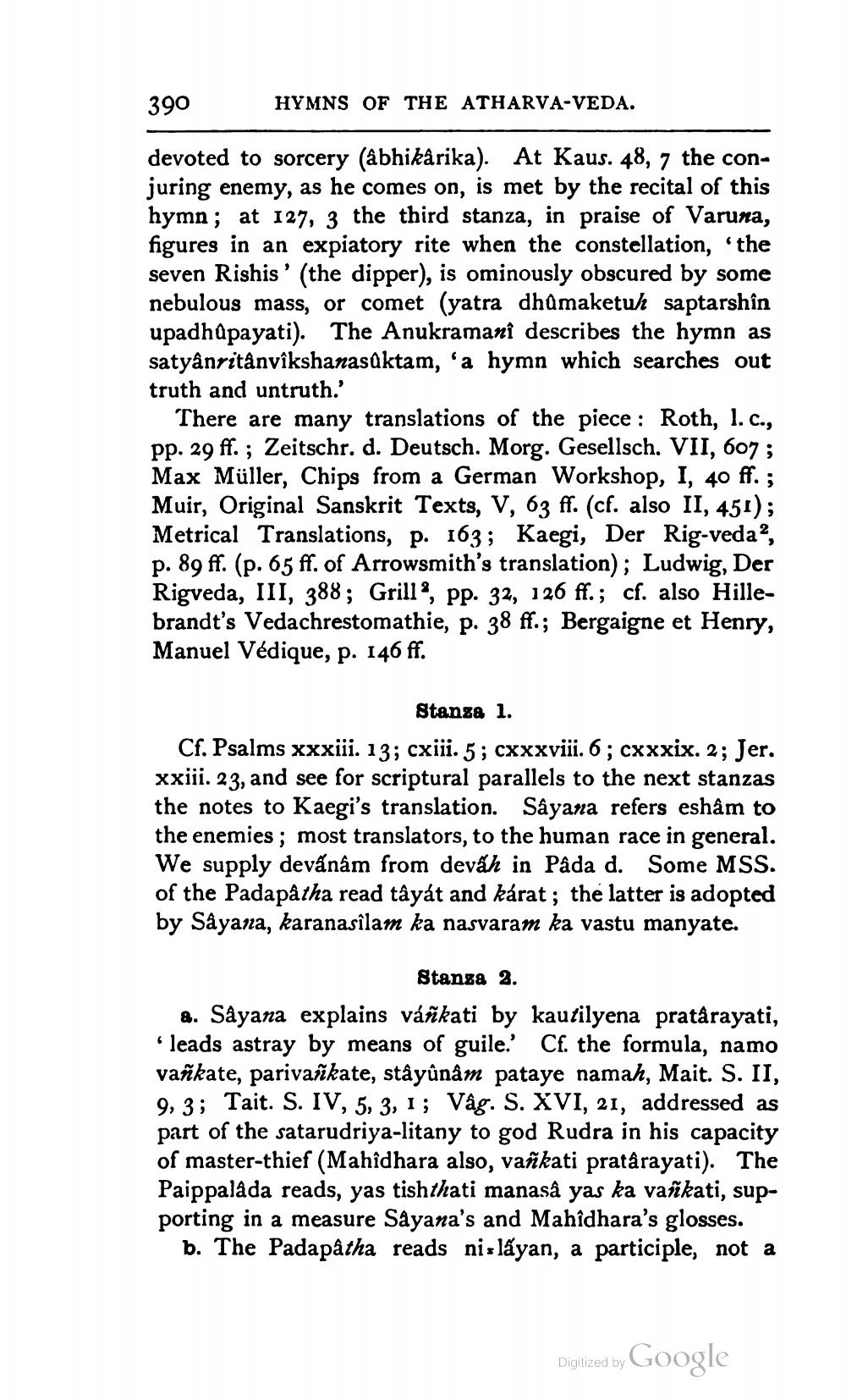________________
390
HYMNS OF THE ATHARVA-VEDA.
devoted to sorcery (abhikârika). At Kaus. 48, 7 the conjuring enemy, as he comes on, is met by the recital of this hymn; at 127, 3 the third stanza, in praise of Varuna, figures in an expiatory rite when the constellation, the seven Rishis' (the dipper), is ominously obscured by some nebulous mass, or comet (yatra dhumaketuh saptarshîn upadhupayati). The Anukramani describes the hymn as satyânritânvikshanasaktam, 'a hymn which searches out truth and untruth.'
There are many translations of the piece : Roth, l. C., pp. 29 ff. ; Zeitschr. d. Deutsch. Morg. Gesellsch. VII, 607; Max Müller, Chips from a German Workshop, I, 40 ff.; Muir, Original Sanskrit Texts, V, 63 ff. (cf. also II, 451); Metrical Translations, p. 163; Kaegi, Der Rig-veda?, p. 89 ff. (p. 65 ff. of Arrowsmith's translation); Ludwig, Der Rigveda, III, 388; Grillo, pp. 32, 126 ff.; cf. also Hillebrandt's Vedachrestomathie, p. 38 ff.; Bergaigne et Henry, Manuel Védique, p. 146 ff.
Stanza 1. Cf. Psalms xxxiii. 13; cxiii. 5; cxxxviii. 6; cxxxix. 2; Jer. xxiii. 23, and see for scriptural parallels to the next stanzas the notes to Kaegi's translation. Sâyana refers eshâm to the enemies; most translators, to the human race in general. We supply devấnám from devah in Pâda d. Some MSS. of the Padapatha read tâyát and kárat; the latter is adopted by Såyana, karanasîlam ka nasvaram ka vastu manyate.
Stansa 2. 8. Sayana explains váñkati by kautilyena pratårayati, leads astray by means of guile.' Cf. the formula, namo vañkate, parivaskate, stâyûnam pataye namah, Mait. S. II, 9, 3; Tait. S. IV, 5, 3, 1; Våg. S. XVI, 21, addressed as part of the satarudriya-litany to god Rudra in his capacity of master-thief (Mahîdhara also, vañkati pratârayati). The Paippalada reads, yas tish thati manasa yas ka vañkati, supporting in a measure Sayana's and Mahidhara's glosses.
b. The Padapatha reads nislấyan, a participle, not a
Digized by Google




